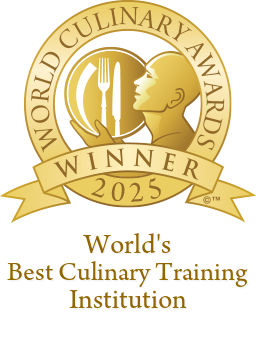French cooking techniques
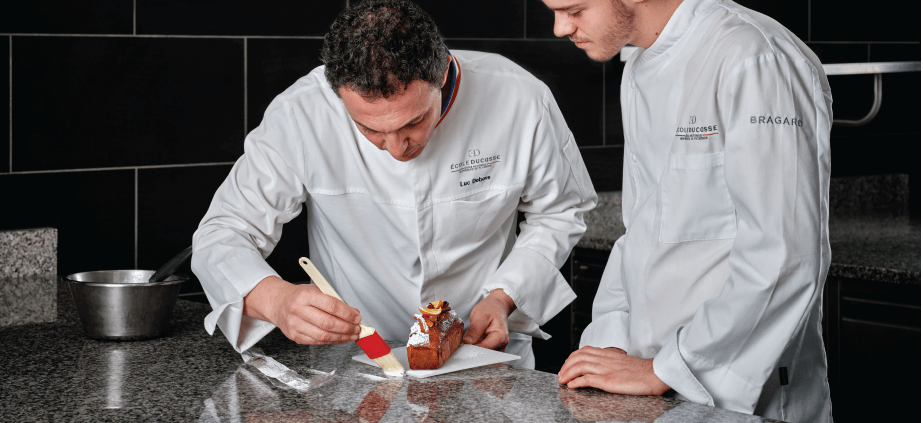

French cooking techniques have long inspired chefs and home cooks in Western countries. From traditional French sauces to French cooking styles, menus in global restaurants and education in culinary schools draw on the skills mastered and developed by world-famous French chefs.
Learning the art of French cooking techniques is a fundamental aspect of becoming a chef, which is why culinary degrees often start with practical training and French cooking basics. But you don’t need to be an aspiring chef to use them as French cooking can be enjoyed at home, too.
Ready to familiarize yourself with techniques that started in the traditional French kitchen? Read on to learn more about French cooking techniques, common terms, and the five ‘mother sauces’ that a French kitchen brigade always rely on.
Introduction to French cooking techniques
The French cuisine that we know today is the accumulation of various techniques and cooking methods originating from France that continue to play a pivotal role in how professional chefs organize, prepare, cook, season, and present dishes.
Brief history of French cuisine
French cuisine and cooking techniques can be traced back to the 14th century. Encompassing a range of methods and ingredients, pioneering chefs, including François Pierre La Varenne, began creating sauces, such as béchamel. La Varenne, in particular, had an influential role in establishing French cuisine and making French food distinct from other cuisines, such as Italian, in the 1600s.
From the 1700s onwards, chefs such as Marie-Antoine Carême, Georges Auguste Escoffier, and Paul Bocuse created recipes for roux – butter and flour cooked together to thicken sauces – and the classic Espagnole sauce. They also paved the way for classical, seasonal, regional, and haute French cuisine.
The work of early French chefs continues to play a vital role in French cuisine, with many of their early recipes and cooking methods still widely used in professional kitchens and in the best French cookbooks.
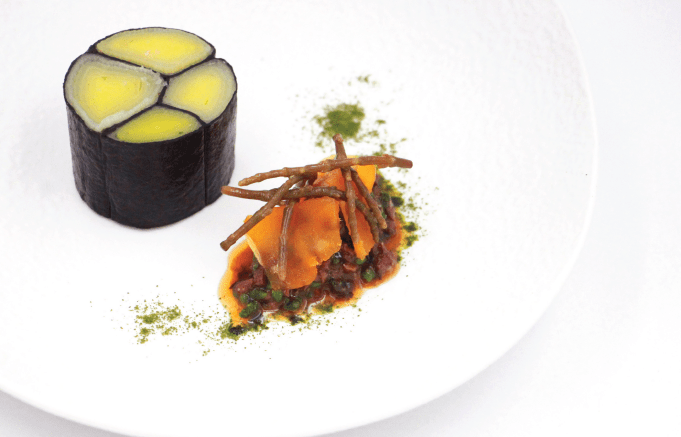
French cooking techniques every chef needs to learn
From searing prime steak to the precise texture of delicate vegetables, French cooking techniques all have an important role in the kitchen.
If you’re looking to establish a career as a chef, these are some of the methods you need to know:
- Flambéing
- Searing
- Sautéing
- Pan-frying
- Poaching
- Broiling
- Grilling
- Braising
- Baking
- Roasting
Understanding the basics of French cuisine
With so many cooking techniques and terms to learn, understanding the basics of French cuisine may seem overwhelming at first. But over time, mastering these procedures through practical experience will equip you with the skills, knowledge, and insight to create delicious, mouthwatering dishes that customers savor and appreciate.
Some of the concepts you need to understand to master the basics of French cooking include:
- Opting for simplicity rather than overcomplicating dishes
- Choosing techniques, such as poaching or grilling, to enhance the ingredients
- Using sauces to enrich your dishes
- Adding herbs for additional flavor
- Understanding the importance of preparation.
The influence of French cooking on global cuisine
In the modern kitchen, French cooking significantly influences international cuisine. Every day, countries including England and America recreate sauces and dishes that originate from France. Likewise, many cooking and baking styles, such as pastry arts, sautéing, poaching, and flambéing, are popular among professional chefs.
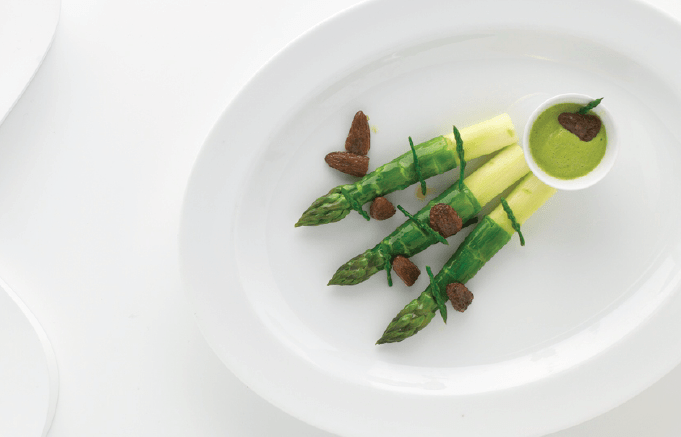
Traditional French cooking techniques and terms
In the French kitchen, there are numerous terms used to describe cooking and food preparation methods. If you’re an aspiring chef, understanding these terms and techniques before beginning your training and education can come in handy.
Below, we share nine of the most famous French cooking techniques and terms and offer a glimpse into what they involve.
1. Bouquet garni
Translating to garnished bouquet in English, bouquet garni is a traditional French cooking technique to improve the depth of flavor in the dish, in which chefs create and submerge an assortment of herbs tied together in a dish during cooking to enhance dishes such as soups and stews. Bouquet garni can also be used in the base for sauces and stocks.
2. Chiffonade
A popular way to prepare salad greens such as spinach, kale, lettuce, and herbs such as mint, chiffonade is a fine slicing technique. A popular French cooking technique, chiffonade means chefs cut ingredients into fine, long strips that often resemble ribbons.
3. Coulis
In the traditional French kitchen, coulis emerged as a French style that saw home cooks and chefs pour juices from meat and poultry over a plate before serving a meal.
Nowadays, coulis is best known for being a French cooking technique that sees professional chefs and home cooks puree fruits and vegetables into a smooth texture.
When made with fruit, coulis is sweet and can be found drizzled over classic French desserts or a modern French pastry. Vegetable coulis can accompany a range of meat and vegetable dishes.
4. Déglacer
The French culinary technique of déglacer enriches and enhances the flavor of traditional French dishes.
Translating to deglazing, chefs remove leftover juices from the pans that meat, for example, is cooked in, before using them to create a base for sauces with perhaps the addition of wine or stock. You may also use déglacer techniques to season soup, gravies, and stews.
5. Demi-Glace
If you’ve dined at a French restaurant, you’ve likely sampled demi-glace before. A brown sauce or stock formed from meats while cooking, demi-glace enriches the flavor of many dishes featuring steak, duck, pork, and chicken.
6. En papillote
Widely popular and known to others as cooking ingredients in foil or paper, en papillote typically sees chefs place fish in paper before baking it in the oven. Herbs, spices, citrus fruit, vegetables, and butter are often added as well to enhance the fish's taste, delivering a mouth-watering and succulent finish.
7. Julienne
If you’re hoping to become a professional chef, julienne is one of the many French cooking techniques you’ll learn when studying for a Bachelor in culinary arts. A food preparation method, chefs julienne, or slice, fruit, vegetables, and meats into long and thin strips.
8. Mirepoix
Originating from the 1800s, mirepoix refers to a French cooking technique that involves dicing vegetables such as carrots and onions before simmering them to create appetizing stocks and soups.
9. Mise en place
Mise en place is a food preparation technique during which a chef prepares, measures, weighs, and assembles all ingredients they require to make a meal before they start cooking. In addition to easing the cooking process, mise en place guarantees that all components are gathered, reducing the risk of missing elements.
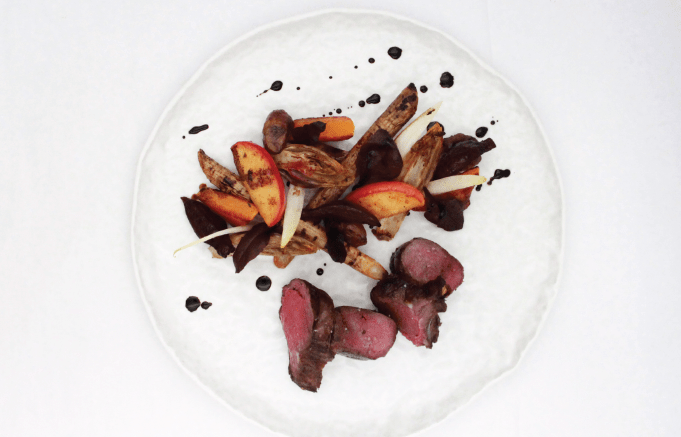
What are the five ‘mother sauces’ in French cooking?
In addition to introducing numerous traditional French cooking techniques to aspiring chefs or budding home cooks, French cuisine is renowned for its five mother sauces, including béchamel, velouté, and hollandaise. All of these are basic French cooking essentials. While you may be familiar with these sauces, let’s explore them below.
Béchamel
The first of five mother sauces in French cooking, béchamel sauce is famous for being used in lasagne, baked pasta dishes, and pies. White in color, this creamy sauce is traditionally made by combining butter – or milk – with flour.
Velouté
A smooth sauce with a creamy texture, velouté is made by mixing béchamel with vegetable or meat stock to create a delicious silky sauce that can be drizzled over meat and vegetables.
Espagnole
A popular type of demi-glace, Espagnole sauce is a flavorful brown sauce that chefs keep aside upon cooking vegetables and meats. Like other mother sauces used in French cooking, Espagnole sauce is usually used with sauces, stews, and soups for additional flavoring.
Hollandaise
Hollandaise is a famous sauce often served in Western countries with eggs to create dishes such as eggs benedict and royale. But did you know that hollandaise is one of the five mother sauces in French cooking?
Yellow in color, traditional hollandaise sauce is a mixture of egg yolk, butter, and lemon juice. Nowadays, you may find hollandaise mixed with other ingredients, such as mustard, for additional flavor.
Tomato
A classic in French cooking, tomato sauce is an all-around sauce that is mixed and served with vegetables, chicken, fish, poultry, and other meats. Created using diced, cooked, or puréed tomatoes, tomato sauce varies in texture depending on how it's prepared. Some chefs like the texture of chopped tomatoes, while others opt for a smooth consistency.
Although tomato sauce can be predominantly made with tomatoes and herbs, it can also be mixed with stock or béchamel for a creamier finish.
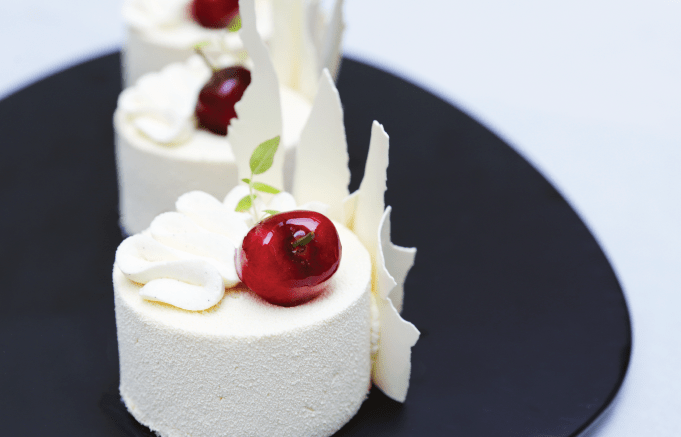
Key ingredients in French cooking techniques#
French cuisine is renowned for its depth of flavor, meticulous techniques and use of high-quality ingredients. Many traditional dishes rely on a few essential components that form the foundation of this celebrated culinary tradition. Some of the most essential ingredients in French foods are:
- Herbs de Provence: a blend of aromatic herbs such as thyme, rosemary, basil and oregano, used to season meats, vegetables and stews
- Garlic: widely used to enhance the flavor of various dishes, from soups and sauces to roasted meats
- Wine: both red and white wine is used to add depth and complexity to sauces, marinades and stews
- Shallots: these small, mild onions are frequently used in sauces and vinaigrettes
- Butter: essential for French sauces, pastries and cooking, it imparts a rich flavor and smooth texture
- Crème fraîche: a thick, tangy cream often used in sauces, soups and desserts
- Dijon mustard: a staple for dressings, sauces and marinades, known for its sharp, tangy flavor
- Fresh bread: baguettes and other breads are fundamental to French meals, often served with cheese, pâté or simply butter
- Cheese: France produces a vast array of cheeses, such as Brie, Camembert and Roquefort, which are used in cooking and as part of cheese courses
- Truffles: these highly prized fungi add an intense, earthy flavor to various dishes, particularly in haute cuisine
- Olive oil: used for cooking, dressings and drizzling over dishes
- Bouquet Garni: a bundle of herbs (typically thyme, parsley and bay leaf) used to infuse flavor into soups, stews and stocks
- Lemon: Both juice and zest are used to brighten and balance flavors in a variety of dishes
French culinary terms you should be aware of
There are a lot of French cooking terms, all reflecting the sophisticated nature of the cuisine. Some French cooking words and terms that are fundamental to understanding and mastering French cooking are:
- Mise en place: this translates to ‘putting in place’ and refers to the preparation and organization of ingredients and tools before cooking begins. It's a crucial practice in professional kitchens to ensure efficiency and smooth workflow during cooking
- Roux: a mixture of flour and fat (usually butter) cooked together and used as a thickening agent for sauces, soups and stews. The color and flavor of the roux can vary depending on how long it's cooked, ranging from white to dark brown
- Confit: this technique involves cooking meat slowly in its own fat, usually at a low temperature, until it's tender and flavorful. Originally a method for preserving food, confit is most commonly associated with duck
- Sous Vide: this method involves vacuum-sealing food in a plastic bag and cooking it in a water bath at a precise, consistent temperature. Sous vide cooking ensures even cooking and retains the food’s moisture and flavor
- Brunoise: a fine dice, where vegetables are cut into very small, uniform cubes, usually around 1/8 inch on each side. This technique is often used for garnishes, soups and sauces where a refined presentation is desired
Perfect French cooking techniques at École Ducasse
If you're interested in culinary careers or cuisine arts and hope to become a professional chef, familiarizing yourself with French cooking styles and French cooking basics is the starting point of culinary courses, including our own.
Master the art of French cooking techniques at École Ducasse
Immerse yourself in comprehensive exploration and hands-on experience of French cooking techniques under the guidance of highly skilled professional chefs with our three-year bachelor's in culinary arts.
Discover the fundamentals of pastry basics at our French pâtisserie school
Participate in practical classes, watch demonstrations, and perfect your French pastry arts skills with professional internships at École Ducasse.
Wondering if a career in culinary arts is for you? We answer questions such as “What is patisserie?” and, “What can you do with a culinary degree?” here.


